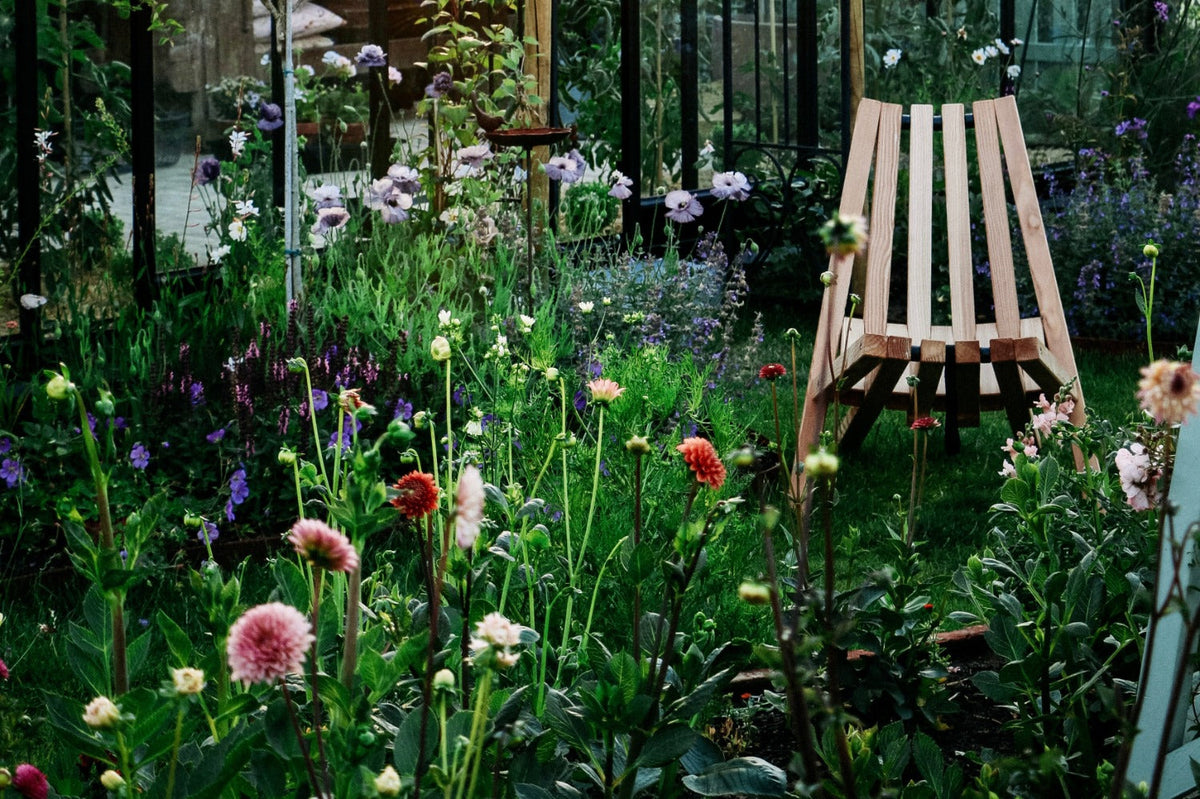
Goodbye Grass, Welcome Flowers: Why Grass Is a Green Tile
|
Tijd nodig om dit artikel te lezen: 4 min
|
Tijd nodig om dit artikel te lezen: 4 min
Now that spring is really coming and the so-called “tile flipping” is on the rise, it doesn’t seem very surprising to me that I want to dedicate this piece to a new trend, namely: cutting back some grass in exchange for larger borders and therefore more flowers and plants. A small story about how to turn your garden into a biodiverse paradise.
I am often called a “grass hater”. Not entirely unexpected, because I think grass is very overrated. I don’t hate it - why would I - but I am convinced that for too long it has been seen as something that belongs in a garden as standard. And in my opinion that is not the case. Of course it is often simply necessary in a large garden, but the reality is that many people have to make do with much less and also have a small garden in the city, for example. The idyllic pictures of meter-high grass in the setting sun are fantastic, but not feasible for everyone. And that is exactly why I think you should be able to say: grass is nice, but I will pass on this cup.
Besides the fact that grass does not belong in every garden, it is increasingly a challenge to keep it green and healthy. It has always been the case that the lawn has a hard time during the summer months , but due to the longer periods of drought it feels more like you are walking on straw. There goes the dew treading. Grass is a plant - because that is what it simply is - that requires a lot of water to be green. This is mainly because it grows roots quite superficially and is therefore more susceptible to drying out. Not mowing the lawn too short brings relief, because the higher the grass, the less quickly the sun can dry out the soil. Campaigns such as "Don't mow in May" are very good initiatives, which I happily support, but isn't it time that we tackle the grass instead of working around it? This can be done very easily by making the lawn smaller and your borders with plants larger. Grass hardly contributes to biodiversity if it is mowed short all the time. You can indeed leave it untouched for a long time and let everything that grows in it flourish. Fantastic for everything that flies around. But again, that is not a feasible option for everyone.
Did you know that we also have a well-stocked YouTube channel? With over 450 videos, we have a large database of information. Be sure to check out YouTube and subscribe, so you can stay up to date with the latest videos.
In this video, Angelo tells you all about creating more biodiversity by mowing less or replacing grass with flowers and plants.
That's quite a statement: grass is a green tile. But unfortunately there is a lot of truth in that. Just think about how much such a short-mown lawn contributes to the biodiversity in your garden. Nothing, nada, zilch. The shorter you mow it, the less it can do for insects. Especially when you make it 'weed-free' and clovers, dandelions or daisies don't even get a chance to bloom. The only advantage of short grass is that it has roots and therefore still absorbs water. It is water-permeable and it is a thousand times better decision than pouring concrete. That is crystal clear. But it is also nothing more than that. For example, grass is not suitable as a path. That quickly becomes clear when you always take the same route, when you walk from A to B in your garden. The grass sinks, you see clear walking tracks . If you want a path in the garden, there are better alternatives, which are water-permeable and, in combination with many flowers, shrubs and trees, support biodiversity much more.
So it can be done differently, I think you agree with me by now. Do I suggest removing all the grass? No. I understand that children playing like to do that on a piece of grass. And that grass often just needs to be given a place during a certain time in our lives. But may I encourage you to sacrifice some of that grass and make an extra border? You can then arrange that border with trees, shrubs, perennials and flower bulbs, so that there is something to experience almost all year round. For yourself, but also for the wildlife in our garden. I tell you with my hand on my heart that you will instantly attract more bees, bumblebees and butterflies. In other words, you create a mini ecosystem, where everything is coordinated. Trees and shrubs attract birds. Those birds in turn are hungry and look for (annoying) insects. It is fantastic to see how quickly nature takes over when you provide a place. To be clear: a lawn is not the culprit in this ever-changing world. And I don’t like to point fingers. But we can really make a difference by thinking about things a bit more carefully. Especially when they’re happening at your back door. And flowers make you happy, so why not opt for more of them? Creating an extra flower border doesn’t always mean more work. On the contrary. You mow the lawn every week. With a border, once it’s mature, you’ll spend less time working on it. Do you dare?



